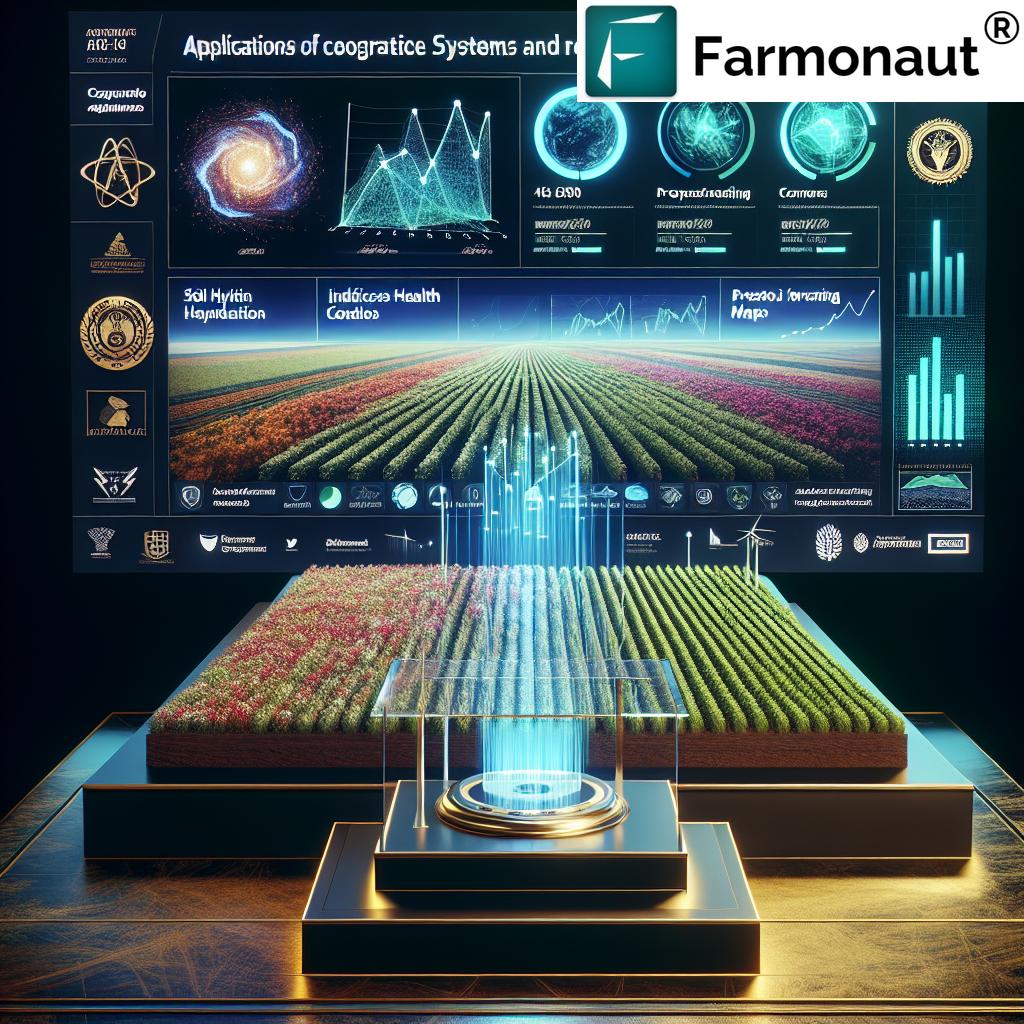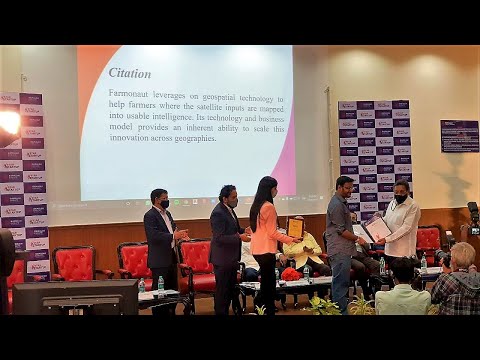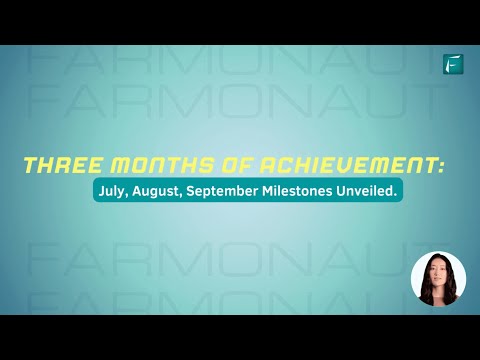Mastering the Crop Science Awards Nomination Process: A Comprehensive Guide for American Agronomists
“Over 80% of successful Crop Science Award nominations include at least 3 strong reference letters from peers.”
Welcome to our comprehensive guide on mastering the crop science awards nomination process, specially tailored for American agronomists. At Farmonaut, we understand the importance of recognizing excellence in agricultural research and innovation. In this blog post, we’ll explore the intricacies of nominating outstanding contributors in agronomy and sustainable agriculture, providing you with invaluable insights to navigate the complex world of agricultural research recognition and crop science awards.
As leaders in agricultural technology, we at Farmonaut are committed to advancing the field of agronomy through innovative solutions and data-driven insights. Our expertise in GIS applications for crop management and remote sensing in agriculture uniquely positions us to guide you through the nomination process for prestigious agronomy awards.
Whether you’re a seasoned professional or an aspiring agricultural scientist, this guide will equip you with the knowledge and tools necessary to submit compelling applications and maximize your chances of success in the competitive world of crop science awards.
Understanding the Importance of Crop Science Awards
Crop science awards play a crucial role in the agricultural community, serving as beacons of excellence and innovation in the field. These accolades not only recognize individual achievements but also contribute to the broader advancement of agricultural science. Let’s delve into why these awards are so significant:
- Recognition of Excellence: Awards highlight outstanding contributions to crop science, encouraging researchers and practitioners to push the boundaries of knowledge and innovation.
- Career Advancement: Winning a prestigious award can significantly boost an agronomist’s career, opening doors to new opportunities and collaborations.
- Funding Opportunities: Many awards come with grants or funding, enabling recipients to further their research and development efforts.
- Industry Impact: Recognized work often leads to practical applications that can improve farming practices, crop yields, and sustainability in agriculture.
- Networking: Award ceremonies and related events provide valuable networking opportunities within the agricultural science community.
As we navigate through this guide, keep in mind that the pursuit of these awards is not just about personal recognition, but about contributing to the broader goals of sustainable agriculture and food security.
Navigating the Nomination Process
The nomination process for crop science awards can be complex, but with the right approach, it becomes manageable. Here’s a step-by-step guide to help you navigate through it:
- Research Available Awards: Start by identifying awards that align with your specific area of expertise within agronomy or sustainable agriculture.
- Review Eligibility Criteria: Carefully read through the eligibility requirements for each award to ensure you or your nominee qualifies.
- Gather Documentation: Collect all necessary documents, including research papers, CVs, and project reports that showcase the nominee’s contributions.
- Craft a Compelling Nomination Statement: Write a clear, concise, and impactful statement highlighting the nominee’s achievements and their significance to the field.
- Secure Strong References: Reach out to respected colleagues who can provide robust letters of recommendation.
- Submit Application: Ensure all materials are submitted before the deadline, following the specific guidelines provided by the awarding body.
Remember, attention to detail is crucial throughout this process. Let’s explore each of these steps in more depth.
Researching Available Awards
The first step in mastering the crop science awards nomination process is to thoroughly research the available awards in your field. This involves:
- Identifying Relevant Organizations: Look into professional societies, academic institutions, and industry associations that offer awards in agronomy and related fields.
- Understanding Award Categories: Many organizations offer multiple award categories, such as early career, lifetime achievement, or specific research areas. Identify which categories best fit your or your nominee’s profile.
- Noting Deadlines and Requirements: Create a calendar of submission deadlines and compile a list of specific requirements for each award.
At Farmonaut, we recognize the importance of staying informed about industry developments and opportunities. Our platform provides real-time crop health monitoring and AI-based advisory systems, which can be valuable tools in conducting cutting-edge research worthy of recognition.
Explore our innovative agricultural solutions:
Reviewing Eligibility Criteria
Once you’ve identified potential awards, it’s crucial to carefully review the eligibility criteria. This step is vital to ensure that you or your nominee meets all the necessary requirements. Consider the following aspects:
- Career Stage: Some awards are specific to early-career scientists, while others target established professionals.
- Research Focus: Ensure that the nominee’s work aligns closely with the award’s specific area of interest within crop science or sustainable agriculture.
- Geographic Restrictions: Check if there are any limitations based on the nominee’s location or citizenship.
- Publication Requirements: Some awards may require a minimum number of peer-reviewed publications or specific types of research outputs.
- Membership Status: Certain awards may be restricted to members of particular professional societies or organizations.
By thoroughly examining these criteria, you can save time and effort by focusing on awards for which you or your nominee are truly eligible.
Gathering Documentation
Assembling a comprehensive package of supporting documents is crucial for a strong award nomination. This typically includes:
- Curriculum Vitae (CV): An up-to-date CV highlighting relevant education, research experience, publications, and achievements.
- Research Papers: Copies of key publications that demonstrate the nominee’s contributions to the field.
- Project Reports: Summaries of significant research projects or initiatives led by the nominee.
- Impact Statements: Clear, concise descriptions of how the nominee’s work has influenced the field of crop science or sustainable agriculture.
- Awards and Recognitions: A list of previous honors or acknowledgments received by the nominee.
At Farmonaut, we understand the importance of data-driven research in agriculture. Our GIS applications for crop management and remote sensing technologies can provide valuable data to support your research claims and strengthen your nomination package.

Crafting a Compelling Nomination Statement
The nomination statement is your opportunity to make a strong case for why the nominee deserves the award. Here are some tips for crafting an impactful statement:
- Start Strong: Begin with a powerful opening that immediately captures the reader’s attention and highlights the nominee’s most significant achievements.
- Provide Context: Explain the broader impact of the nominee’s work on crop science, sustainable agriculture, or related fields.
- Use Specific Examples: Illustrate the nominee’s contributions with concrete examples of their research, innovations, or leadership.
- Highlight Uniqueness: Emphasize what sets the nominee apart from others in the field.
- Address Award Criteria: Ensure that your statement directly addresses the specific criteria outlined for the award.
- Be Concise: While comprehensive, keep your statement clear and to the point, respecting any word limits set by the awarding body.
Remember, the nomination statement should tell a compelling story about the nominee’s journey and contributions to the field of agronomy.
Securing Strong References
Strong letters of recommendation can significantly bolster a nomination. Here’s how to approach this crucial aspect:
- Choose Wisely: Select references who are well-respected in the field and can speak authoritatively about the nominee’s work.
- Provide Context: Brief your references on the specific award and its criteria to help them tailor their letters effectively.
- Allow Ample Time: Reach out to potential references well in advance of the submission deadline.
- Offer Support: Provide references with the nominee’s CV and key accomplishments to assist them in writing detailed, relevant letters.
- Follow Up: Gently remind references of approaching deadlines to ensure timely submission.
At Farmonaut, we recognize the value of collaboration in advancing agricultural science. Our platform facilitates connections between agronomists and researchers, potentially helping you identify strong references for your nominations.
Submitting the Application
The final step in the nomination process is submitting the application. This step requires attention to detail and adherence to guidelines:
- Review Submission Guidelines: Carefully read and follow all instructions provided by the awarding body.
- Check for Completeness: Ensure all required documents are included and properly formatted.
- Meet Deadlines: Submit well before the deadline to avoid any last-minute technical issues.
- Confirm Receipt: If possible, request confirmation that your application has been received.
- Keep Records: Maintain copies of all submitted materials for your reference.
By following these steps meticulously, you increase the chances of a successful nomination.
“GIS applications in crop management have increased precision agriculture efficiency by up to 25% in the last decade.”
Leveraging Technology in Your Nomination
In today’s digital age, incorporating cutting-edge technologies in your research can significantly strengthen your award nomination. At Farmonaut, we specialize in GIS applications for crop management and remote sensing in agriculture, which can provide valuable data and insights to support your nomination.
- Satellite-Based Crop Monitoring: Showcase how you’ve used advanced satellite imagery to monitor crop health and optimize yields.
- AI-Driven Insights: Highlight any innovative use of artificial intelligence in your agricultural research or practice.
- Precision Agriculture: Demonstrate how you’ve implemented precision farming techniques to improve sustainability and efficiency.
- Data Visualization: Use compelling visual representations of your data to make your research more accessible and impactful.
Integrating these technological aspects into your nomination can set you apart and demonstrate your commitment to advancing the field of agronomy.
Explore our API for advanced agricultural data: Farmonaut API
Learn more about integrating our technology: API Developer Docs
Emphasizing Sustainable Agriculture Practices
With growing concerns about climate change and environmental sustainability, awards in crop science increasingly value contributions to sustainable agriculture. Here’s how to highlight your work in this area:
- Resource Efficiency: Showcase research or innovations that improve water use efficiency or reduce reliance on chemical inputs.
- Soil Health: Highlight practices or studies that promote soil conservation and improve soil fertility naturally.
- Climate Resilience: Emphasize work on developing crop varieties or farming methods that are adaptable to changing climate conditions.
- Biodiversity: Discuss efforts to maintain or enhance biodiversity in agricultural systems.
- Sustainable Intensification: Demonstrate how your work contributes to increasing crop yields while minimizing environmental impact.
At Farmonaut, we’re committed to supporting sustainable agriculture through our innovative technologies. Our platform can help you track and demonstrate the environmental impact of your agricultural practices, providing valuable data for your award nominations.
Navigating Resubmissions
If your initial nomination was unsuccessful, don’t be discouraged. Many prestigious awards often go to nominees who have applied multiple times. Here’s how to approach resubmissions:
- Seek Feedback: If possible, request feedback from the award committee on your previous submission.
- Update and Improve: Incorporate any new achievements, publications, or project outcomes since your last submission.
- Refine Your Statement: Based on feedback or new insights, revise your nomination statement to make it more compelling.
- Consider New References: If appropriate, seek new or additional references who can speak to your recent work.
- Stay Persistent: Remember that resubmission shows commitment and growth in your field.
Persistence and continuous improvement are key in the world of agricultural research and recognition.

Utilizing Society Email Addresses
Many professional societies in agronomy and crop science provide members with society email addresses. These can be valuable tools in the award nomination process:
- Professional Communication: Use your society email for all award-related correspondence to maintain a professional image.
- Networking: Society emails can help you connect with potential references or collaborators within the agricultural science community.
- Staying Informed: These email addresses often grant access to society newsletters and announcements about upcoming awards and opportunities.
- Credibility: A society email address can lend additional credibility to your nomination, showing your active involvement in professional organizations.
Remember to check these email accounts regularly and keep your contact information up to date with your professional societies.
Managing Reference Letters
Reference letters are a crucial component of many award nominations. Here are some tips for effectively managing this aspect of the process:
- Early Request: Ask for reference letters well in advance of the deadline, giving your references ample time to write thoughtful letters.
- Provide Information: Supply your references with your CV, research summary, and the award criteria to help them write targeted letters.
- Diverse Perspectives: Choose references who can speak to different aspects of your work and character.
- Follow-Up: Politely follow up with your references as the deadline approaches, offering assistance if needed.
- Express Gratitude: Always thank your references for their time and effort, regardless of the nomination outcome.
Strong, well-managed reference letters can significantly enhance your nomination package.
Crop Science Awards Nomination Checklist
| Task | Description | Status |
|---|---|---|
| Confirm Eligibility | Review award criteria and ensure you meet all requirements | [ ] |
| Gather Research Documentation | Compile relevant papers, reports, and data | [ ] |
| Prepare CV | Update CV with latest achievements and publications | [ ] |
| Write Nomination Statement | Craft a compelling narrative highlighting your contributions | [ ] |
| Select References | Choose and contact potential referees | [ ] |
| GIS/Remote Sensing Integration | Highlight use of advanced technologies in your research | [ ] |
| Sustainable Agriculture Practices | Emphasize contributions to sustainable farming methods | [ ] |
| Submit Application | Ensure all materials are submitted before the deadline | [ ] |
Leveraging Networking Opportunities
Networking plays a crucial role in the world of agricultural science and can significantly impact your chances of award recognition. Here’s how to make the most of networking opportunities:
- Attend Conferences: Participate in relevant agricultural conferences to present your work and meet peers in your field.
- Join Professional Associations: Become an active member of crop science societies and contribute to their activities.
- Collaborate on Research: Seek opportunities to collaborate with other researchers, which can lead to more impactful work and broader recognition.
- Engage in Online Communities: Participate in online forums and social media groups related to agronomy and crop science.
- Volunteer for Committees: Offer your expertise on award committees or other organizational bodies to gain insights into the selection process.
Remember, networking is not just about promoting yourself, but about contributing to the broader agricultural science community and staying informed about the latest developments in your field.
Staying Updated with Agricultural Policy and Funding
Keeping abreast of agricultural policy and funding opportunities can enhance your research and strengthen your award nominations. Consider the following:
- Farm Bill Awareness: Stay informed about the latest Farm Bill and its implications for agricultural research and funding.
- Research Grants: Regularly check for funding opportunities from federal agencies, private foundations, and industry partners.
- Policy Engagement: Understand how your research aligns with or addresses current agricultural policy challenges.
- Advocacy: Consider participating in advocacy efforts to support agricultural research funding and policy development.
At Farmonaut, we strive to keep our users informed about relevant policy changes and funding opportunities that could impact their research and agricultural practices.
Continuous Professional Development
To remain competitive for crop science awards, it’s essential to engage in continuous professional development. Here are some strategies:
- Attend Webinars: Participate in online seminars to stay updated on the latest agricultural research and technologies.
- Pursue Certifications: Seek relevant certifications to enhance your expertise in specific areas of agronomy.
- Read Industry Publications: Stay current by regularly reading academic journals and industry magazines in your field.
- Teach or Mentor: Engage in teaching or mentoring activities, which can deepen your understanding and contribute to your professional growth.
- Explore New Technologies: Familiarize yourself with emerging technologies in agriculture, such as AI, blockchain, and advanced GIS applications.
Continuous learning and adaptation are key to staying at the forefront of agricultural science and increasing your chances of award recognition.
Balancing Research and Practical Application
Many prestigious crop science awards value not only academic research but also practical applications that benefit farmers and the agricultural industry. Here’s how to strike a balance:
- Field Trials: Conduct field trials to demonstrate the real-world applicability of your research findings.
- Farmer Collaborations: Partner with local farmers to implement and test your innovations in real agricultural settings.
- Extension Work: Engage in agricultural extension activities to share your knowledge directly with farming communities.
- Industry Partnerships: Collaborate with agricultural companies to develop practical solutions based on your research.
- Economic Impact: Consider and document the potential economic benefits of your work for farmers and the agricultural sector.
At Farmonaut, we understand the importance of bridging the gap between research and practical application. Our platform is designed to help researchers and farmers alike implement data-driven agricultural practices efficiently.
Highlighting Educational Contributions
Many crop science awards also recognize contributions to agricultural education. If applicable, emphasize your educational impact:
- Curriculum Development: Highlight any roles you’ve played in developing or improving agricultural science curricula.
- Student Mentorship: Discuss your experience mentoring undergraduate or graduate students in agricultural research.
- Public Outreach: Describe any efforts to educate the general public about important agricultural topics.
- Innovative Teaching Methods: Showcase any novel approaches you’ve used in teaching agronomy or related subjects.
- International Education: Emphasize any contributions to agricultural education in developing countries or international settings.
Educational contributions demonstrate your commitment to nurturing the next generation of agricultural scientists and practitioners.
Addressing Global Agricultural Challenges
Many prestigious awards in crop science recognize work that addresses significant global challenges. Consider how your research contributes to:
- Food Security: Demonstrate how your work contributes to increasing food production or improving food distribution systems.
- Climate Change Adaptation: Highlight research on crop varieties or farming methods that are resilient to changing climate conditions.
- Water Scarcity: Showcase innovations in water-efficient farming or drought-resistant crop development.
- Soil Conservation: Emphasize work on preventing soil degradation and improving soil health.
- Sustainable Intensification: Illustrate how your research helps increase agricultural productivity while minimizing environmental impact.
At Farmonaut, we’re committed to providing tools and technologies that support research addressing these global challenges. Our satellite-based crop monitoring and AI advisory systems can be valuable assets in tackling these issues.
Leveraging Media and Communication
Effective communication of your research and achievements can significantly enhance your visibility and credibility in the field. Consider the following strategies:
- Publish in High-Impact Journals: Aim to publish your research in respected, peer-reviewed journals in your field.
- Engage with Agricultural Media: Seek opportunities to be featured in agricultural magazines, podcasts, or news outlets.
- Maintain an Online Presence: Consider creating a professional website or actively maintaining a research-focused social media account.
- Develop a Research Blog: Share insights and updates about your work through a blog, making your research more accessible to a broader audience.
- Participate in Science Communication Events: Engage in science fairs, public lectures, or agricultural expos to communicate your work to diverse audiences.
Remember, effective communication not only increases your chances of award recognition but also enhances the overall impact of your research on the agricultural community.
Farmonaut Subscriptions
To support your research and agricultural practices with cutting-edge technology, consider exploring Farmonaut’s subscription options:
Frequently Asked Questions
Here are some common questions about the crop science awards nomination process:
- Q: How often are most crop science awards given?
A: Many prestigious awards are given annually, but some may be biennial or have different schedules. Always check the specific award’s guidelines. - Q: Can I nominate myself for a crop science award?
A: This depends on the award. Some allow self-nominations, while others require nominations from peers or institutions. Review the award’s rules carefully. - Q: How important is it to have publications when applying for awards?
A: Publications in peer-reviewed journals are often crucial for research-based awards. They demonstrate your contributions to the field and the impact of your work. - Q: Are there age limits for crop science awards?
A: Some awards are specifically for early-career scientists or have age limits, while others are open to researchers at any career stage. Always check the eligibility criteria. - Q: How can I improve my chances if I’ve been unsuccessful in previous nominations?
A: Seek feedback if possible, update your application with new achievements, refine your nomination statement, and consider new references. Persistence and continued growth in your field are key.
Conclusion
Mastering the crop science awards nomination process is a journey that requires dedication, attention to detail, and a commitment to excellence in agricultural research and practice. By following the guidelines and strategies outlined in this comprehensive guide, you can significantly enhance your chances of recognition in the field of agronomy and sustainable agriculture.
Remember, the pursuit of these awards is not just about personal accolades, but about contributing to the advancement of agricultural science and addressing global challenges in food production and sustainability. At Farmonaut, we’re proud to support agronomists and researchers with our innovative GIS applications for crop management and remote sensing technologies.
As you embark on your journey towards award recognition, keep pushing the boundaries of agricultural science, stay informed about the latest developments in your field, and continue to make meaningful contributions to sustainable agriculture. Your work has the potential to shape the future of farming and food security worldwide.
We wish you the best of luck in your award nominations and future research endeavors. Together, we can drive innovation and excellence in crop science, creating a more sustainable and food-secure world for generations to come.






